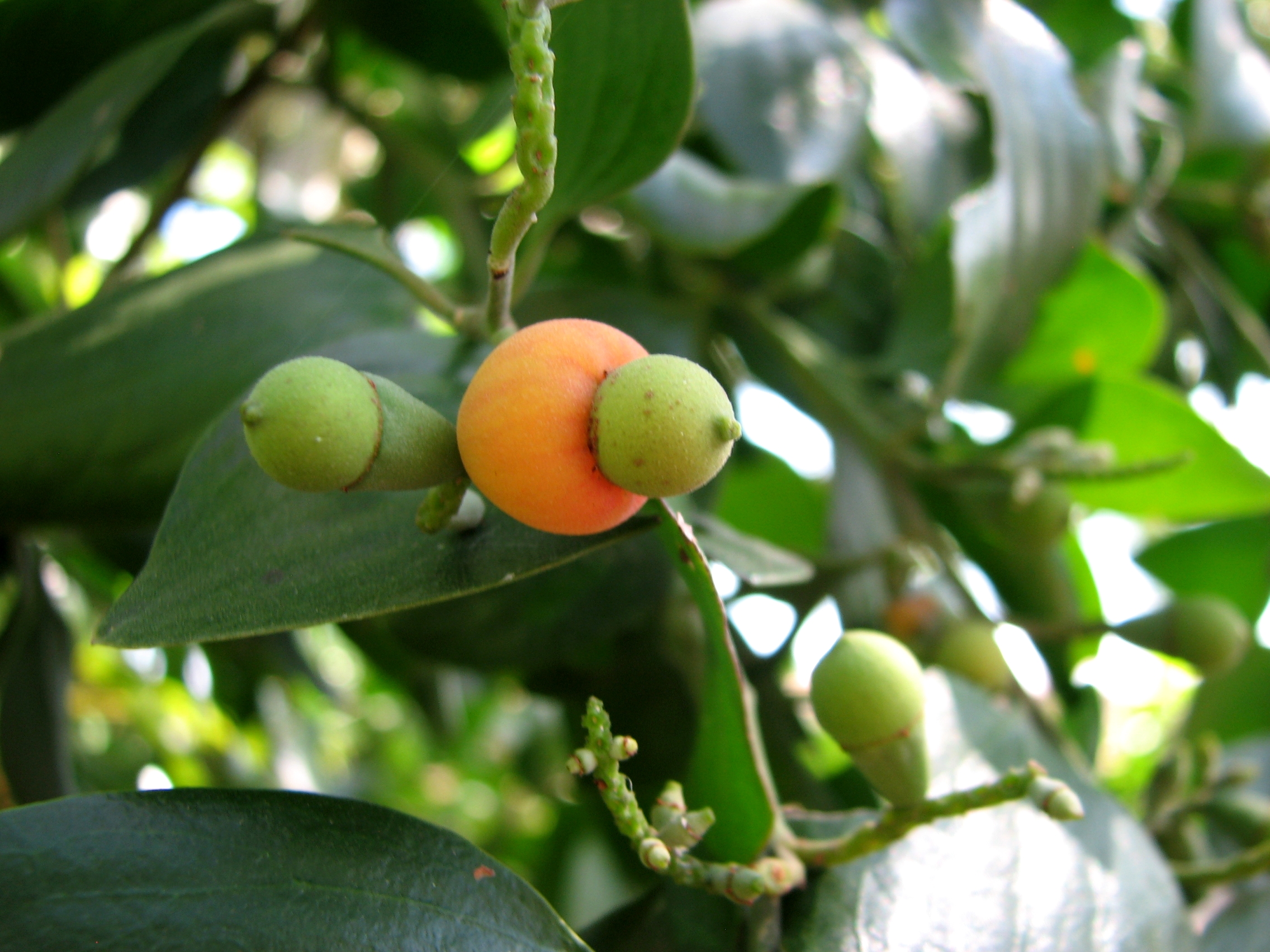Exocarpos Latifolius on:
[Wikipedia]
[Google]
[Amazon]
''Exocarpos latifolius'' is a species of parasitic tree, in the plant family 
 It is a small tree (or large shrub) growing to 10 metres tall, hemiparasitic on the roots of other trees. The leaves are approximately as broad as long, around 4 cm long. Flowers are produced in slender spikes mostly approximately 1 cm long. The fruit is a globular nut on a short stalk. As it ripens the stalk swells and turns red, like an inside out cherry. The fruit is 4–6 mm long and is inedible, though the stalk is, and was used as a traditional food source by
It is a small tree (or large shrub) growing to 10 metres tall, hemiparasitic on the roots of other trees. The leaves are approximately as broad as long, around 4 cm long. Flowers are produced in slender spikes mostly approximately 1 cm long. The fruit is a globular nut on a short stalk. As it ripens the stalk swells and turns red, like an inside out cherry. The fruit is 4–6 mm long and is inedible, though the stalk is, and was used as a traditional food source by
Santalaceae
The Santalaceae, sandalwoods, are a widely distributed family of flowering plants (including small trees, shrubs, perennial herbs, and epiphytic climbersHewson & George t al.br>''Santalaceae'' taxonomy, 1984, pp. 191-194.) which, like other memb ...
. They have the common names broad leaved ballart, scrub sandal-wood, scrub cherry, oringorin, broad leaved cherry or native cherry. The species is found in monsoon forest
Seasonal tropical forest, also known as moist deciduous, semi-evergreen seasonal, tropical mixed or monsoon forests, typically contain a range of tree species: only some of which drop some or all of their leaves during the dry season. This tropic ...
, littoral
The littoral zone or nearshore is the part of a sea, lake, or river that is close to the shore. In coastal ecology, the littoral zone includes the intertidal zone extending from the high water mark (which is rarely inundated), to coastal areas ...
rainforest and occasionally in more open forest types in Malesia
Malesia is a biogeographical region straddling the Equator and the boundaries of the Indomalayan and Australasian realms, and also a phytogeographical floristic region in the Paleotropical Kingdom. It has been given different definitions. ...
and across Northern Australia.

 It is a small tree (or large shrub) growing to 10 metres tall, hemiparasitic on the roots of other trees. The leaves are approximately as broad as long, around 4 cm long. Flowers are produced in slender spikes mostly approximately 1 cm long. The fruit is a globular nut on a short stalk. As it ripens the stalk swells and turns red, like an inside out cherry. The fruit is 4–6 mm long and is inedible, though the stalk is, and was used as a traditional food source by
It is a small tree (or large shrub) growing to 10 metres tall, hemiparasitic on the roots of other trees. The leaves are approximately as broad as long, around 4 cm long. Flowers are produced in slender spikes mostly approximately 1 cm long. The fruit is a globular nut on a short stalk. As it ripens the stalk swells and turns red, like an inside out cherry. The fruit is 4–6 mm long and is inedible, though the stalk is, and was used as a traditional food source by Aboriginal Australians
Aboriginal Australians are the various Indigenous peoples of the Mainland Australia, Australian mainland and many of its islands, such as Tasmania, Fraser Island, Hinchinbrook Island, the Tiwi Islands, and Groote Eylandt, but excluding the T ...
. The seed is found on the outside of the fruit, hence the name exocarpus, from the Latin meaning ''outer''. The wood is very fine-grained with little figure but often striking colour variation and was historically used for cabinet work.
The tree was used for many purposes by Aboriginal Australians
Aboriginal Australians are the various Indigenous peoples of the Mainland Australia, Australian mainland and many of its islands, such as Tasmania, Fraser Island, Hinchinbrook Island, the Tiwi Islands, and Groote Eylandt, but excluding the T ...
.The bark was used as a contraceptive. The leaves were burned to repel insects and leaves used in a solution to treat sores.
The 1889 book 'The Useful Native Plants of Australia’ records that Indigenous Australians of Queensland referred to this tree as "Oringorin". Common names included Broad-leaved "Native Cherry" and "Scrub Sandalwood". It also states that "The fruit is edible."
References
latifolius Bushfood Flora of Queensland Flora of New South Wales Australian Aboriginal bushcraft Taxa named by Robert Brown (botanist, born 1773) {{Australia-eudicot-stub